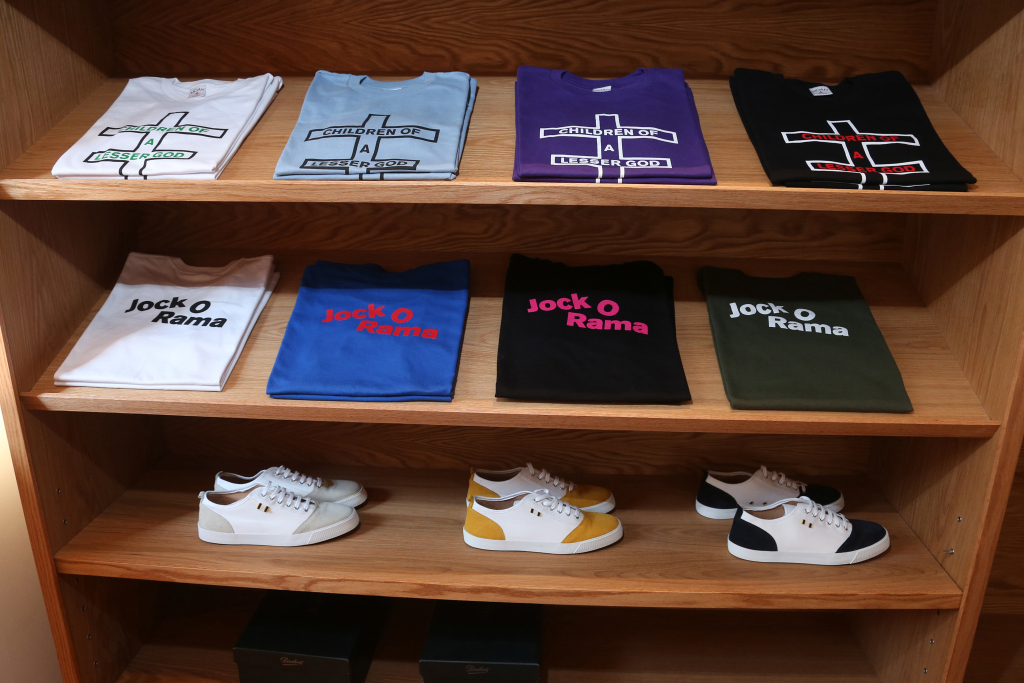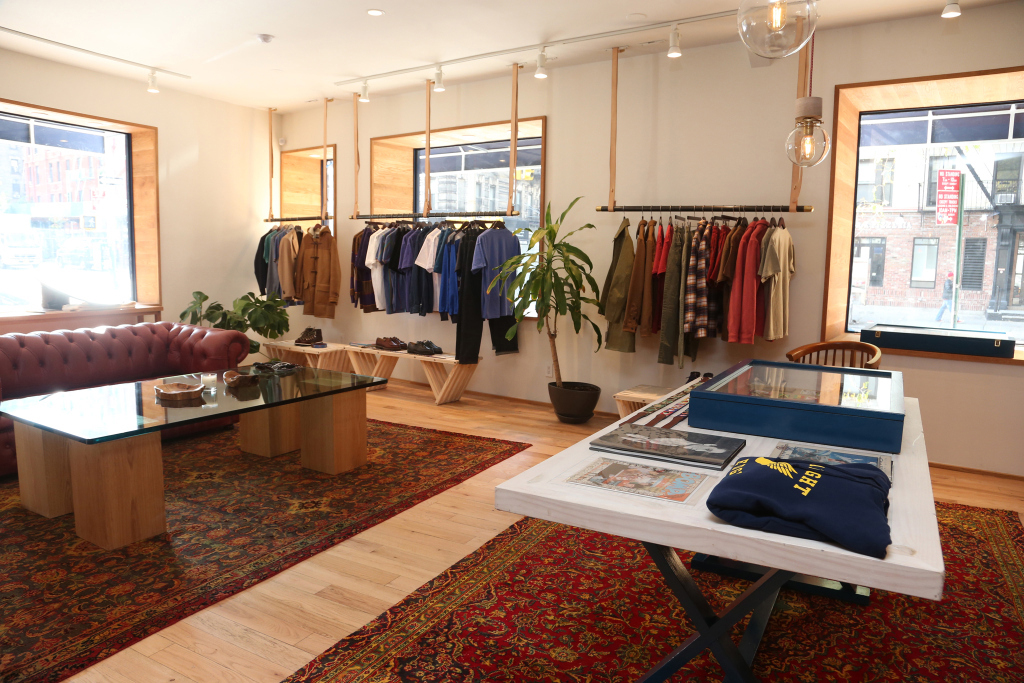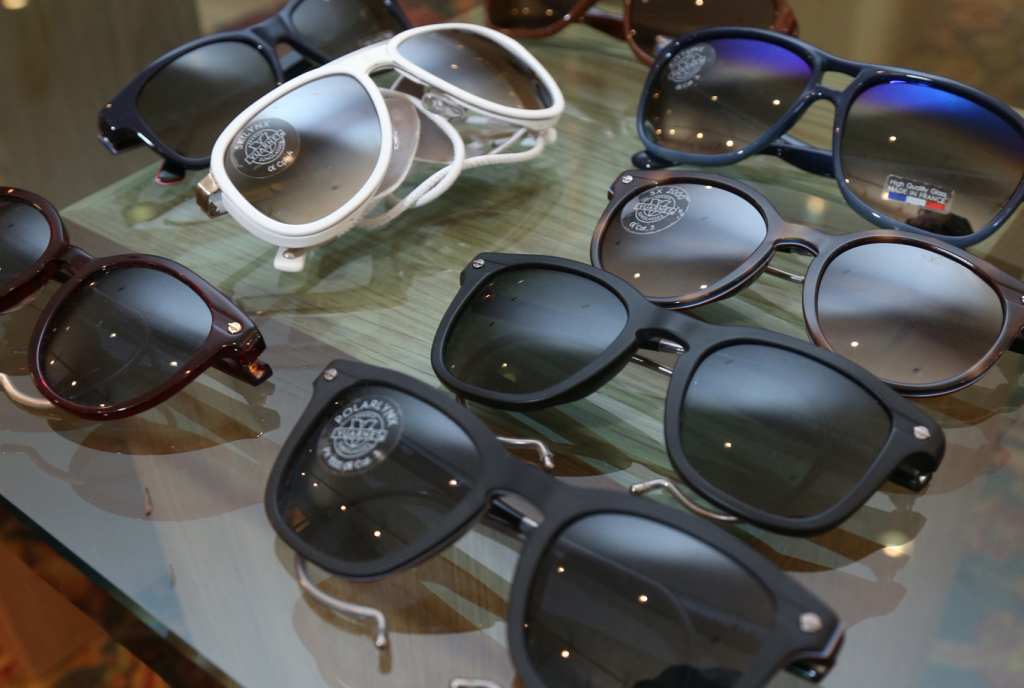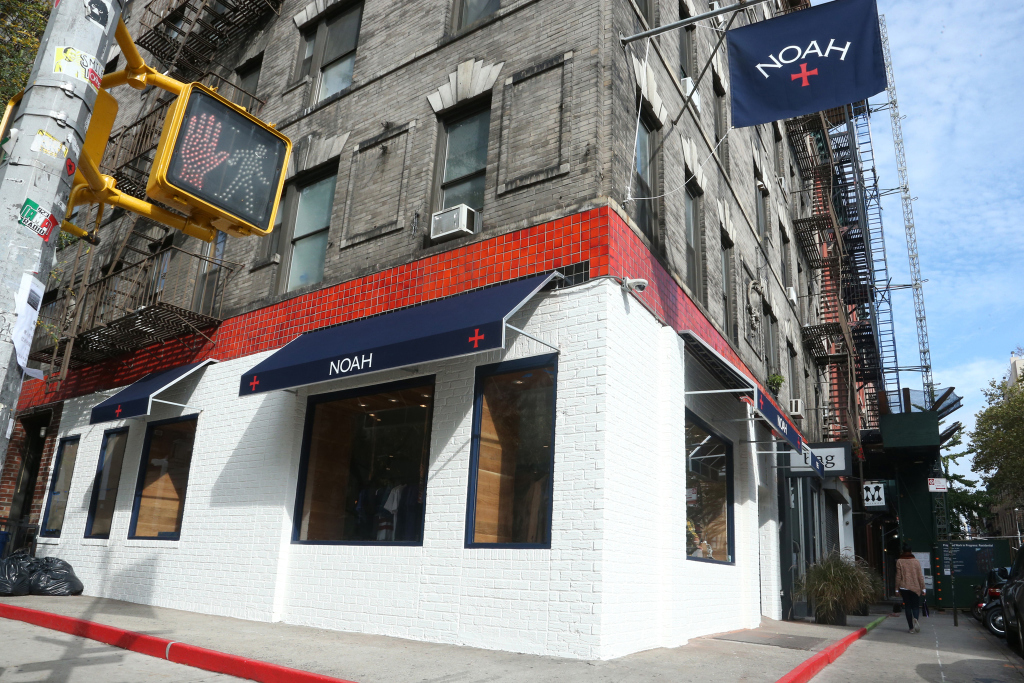text by Adam Lehrer
Private Policy is the gender-neutral fashion label by two Chinese-born fresh-faced recent Parsons grads Haoran Li and Siying Qu. Only two collections in, the two designers have created a smart albeit colorful range of menswear fitted products that can also sensibly be worn by women. The clothes seem to reference V Files-approved street wear, colorful and a bit off, with a focus on high fashion tailoring and embellishment: a simple fitted turtleneck comes exaggerated by orange bondage belting, a velvet bomber jacket is equipped by fluffy tassels, gigantic fur-laden scarves adorn the shoulders of brown down jackets.
True to the Parsons fashion education, Li and Qu have a business sensibility that is not always but often lost on young designers, perhaps instilled in them through internships with the likes of Calvin Klein, Alexander Wang, and Phillip Lim. In other words, they want to be the kind of designers that make dope clothes worn to death by their well carved out customer bases. Their clothes wouldn’t look at all out of place in the underground clubs of Bushwick or the dive bars of the Lower East Side; clothes meant to be worn by an exuberantly young creative force growing less and less concerned with dressing in accordance with their private parts and income brackets. These garments are sensibly chaotic.
ADAM LEHRER: Where did you guys grow up?
HAORAN LI: We are originally from China, but we grew up in different places. I lived in Canada for high school, in Toronto. I came to New York for college. She went to high school in North Carolina.
LEHRER: Did you first become aware of fashion living in China, or did you get more of a sense of it living in Canada?
HAORAN LI: My parents are jewelry designers and were focused on art.
SIYING QU: My family: career wise, though everyone is in business, everyone has this love for fine arts. When I came here for high school, in North Carolina, I had the chance to learn more about fine arts and fashion. From there, I realized fashion would be the perfect career for me. It’s a combination of art and business. We don’t think focusing on business is limiting, but a challenge. We are fashion designers, not artists. We are designing a product.
LEHRER: You guys got a sense of what luxury meant to you personally at a young age?
SIYING QU: Yes. My mom, for example, has amazing fashion sense. She has an eye for details. She paid a lot of attention not just to the clothes, but to the details of the garment as well.
LEHRER: You guys went to Parsons. What brought you to that school?
HAORAN LI: I decided on New York because I like the style of it. It’s chill but it has unique things too.
SIYING QU: I applied both in New York and London. When I visited the two cities, New York, especially Parsons, has a very strong sense of both the design and business of fashion. I find it fascinating.
LEHRER: How did you guys meet? When did you guys realize you had a creative kindred spirit?
HAORAN LI: We were in the same year of school, but we never had class together. She was working on menswear and I was majoring in women’s. But senior year, we were working on our thesis collections, and our working tables were next to each other. That’s how we got to know each other more.
SIYING QU: During senior year at Parsons there is a lot of stress on the thesis collection. You try to pull four years of study into one collection and show not just what skills you have, but your personality, what you stand for. Under that stress, we worked next to each other. He would help me with styling. I would help him sew a pocket.
LEHRER: You did womenswear, and you did menswear. Did you find similarities in the ways you wanted men to dress and the ways you wanted women to dress?
HAORAN LI: I majored in womenswear, but my focus is in textiles. I do patterns, and I construct garments. I do very simple shapes, but with very complicated fabrics. She’s very good at silhouettes and shapes.
SIYING QU: Also, our vision for menswear has very sensible style and a simple silhouette, but with a design touch to it. When you wear this piece, you feel comfortable, you feel like yourself. But still, your piece will not be the same as something elsewhere.
ADAM LEHRER: There seems to be a sub-cultural referring at work in the clothes, is that accurate?
SIYING QU: A major inspiration for our brand is contemporary Downtown New York City.
HAORAN LI: We like Soho, Chinatown, the Lower East Side. We like how they dress here. Our friends live here, and they inspire what we do right now.
LEHRER: It’s a menswear brand, but it’s made for men and women. Was there a decision to name it a “menswear” brand as opposed to “gender neutral?”
SIYING QU: Every silhouette and fitting so far is men’s. We mark it that way, because that’s how we fit the clothes.
HAORAN LI: After we made our garments, a lot of girls were really attracted to them. That’s how we decided to go in a genderless direction.
SIYING QU: From a personal perspective, my girl friends and I all wear menswear, for a different style. Womenswear, I think, has too much design going on, or the silhouette isn’t clean enough for me.
LEHRER: What are your ultimate hopes and goals for the brand?
SIYING QU: We have a lot of hopes. Of course, in selling. We hope to make this a stable brand so that we can bring the ideology of the dress to a bigger audience.
HAORAN LI: We want to bring the Downtown New York style to more people.
LEHRER: How do you see your customer, and how do you go about widening the space for who that customer can be?
SIYING QU: We have started to do trade shows and presentations. While we were talking to the press, we realized that our designs alone brought the customers to us. The buyers are drawn to our colors and textures, in the midst of this big New York environment.
LEHRER: Right now is an interesting time in fashion. High fashion seems to be made for a very specific person, with a very specific set of beliefs. Do you feel like you’re in a unique place in fashion that you might not have been if you graduated three years ago?
HAORAN LI: Three years ago was another story for fashion. Right now, fashion is more and more close to ordinary people. There’s less class in fashion.
LEHRER: It’s less about class and more about taste.
HAORAN LI: Yeah.
LEHRER: You guys are two collections in now, and the demand for new product has never been this substantial. Is the team just you two?
SIYING QU: For design, just us. If we need help, we have a big friend group. We love them so much. They’re so generous. It’s a good feeling. They really like the design. We have a marketing manager in China. We just came back from there. China will be another big market for us. Today, we think, as a young brand, it’s important to make a global presence. Also, from our background, being Chinese and then studying here, traveling a lot, we have that international sense. Hopefully, we’ll go to Paris next. I believe that people in Europe will have a unique viewpoint.
Find stockists and see current Private Policy collections on the label's website. Text, interview and photographs by Adam Lehrer. Follow Autre on Instagram: @AUTREMAGAZINE






